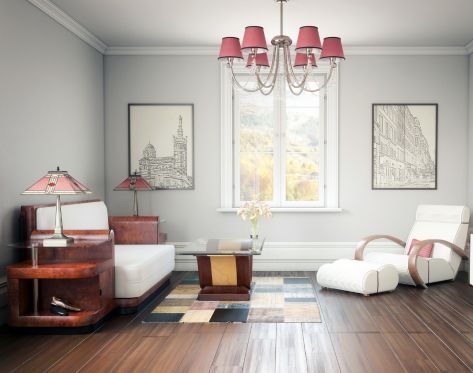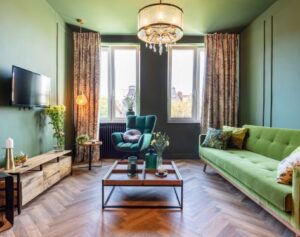When it comes to interior design, art holds the power to elevate spaces to new heights, adding depth, personality, and a captivating visual appeal. The integration of art into interior design not only enhances the aesthetics but also creates a meaningful connection between the space and its occupants. In this blog post, we will explore the art of incorporating art in interior design, discussing various approaches, techniques, and benefits that come with this harmonious union.
Finding the Perfect Artwork:
The first step in incorporating art into interior design is finding the perfect artwork that resonates with the space and its intended atmosphere. One has to delve into various considerations, including the style, scale, color scheme, and theme of the artwork, while also exploring options such as paintings, sculptures, prints, and mixed media.
Creating Focal Points:
Art has the incredible ability to serve as a focal point within a room, drawing attention and setting the tone for the entire space. One has to discuss strategies for placing artwork strategically, such as above a fireplace, at the end of a hallway, or on a feature wall, to create a captivating focal point that anchors the room’s design.
Complementing the Design Concept:
Art can seamlessly integrate with the existing design concept, complementing and enhancing the overall aesthetics. One has to explore how artwork can reinforce or contrast considerations, including the style, scale, color scheme, and theme of the artwork, while also exploring options such as paintings, sculptures, prints, and mixed media.
Playing with Scale and Proportion:
Artwork comes in various sizes and shapes, allowing for playful experimentation with scale and proportion. One has to explore how oversized pieces can make a bold statement in a spacious room, while smaller artworks can add subtle accents or create gallery-like arrangements. One has to provide tips for selecting and arranging artwork based on the room’s dimensions and layout.
Layering Textures and Dimensions:
Integrating different textures and dimensions can bring a dynamic quality to the interior design. One has to discuss how incorporating art with various materials, such as textured canvases, sculptures, or mixed-media pieces, can add depth and tactile interest to the space. One has to also explore the concept of layering artwork, where multiple pieces are carefully curated and arranged to create an engaging and visually rich composition.
Personalizing the Space:
Art offers a unique opportunity to infuse personal touches and tell individual stories within a space. One has to delve into the significance of selecting art that resonates with the homeowner’s or occupant’s personal taste, interests, or cultural background, resulting in a truly personalized and meaningful interior.
Art Lighting Techniques:
Proper lighting is key to showcasing artwork effectively. One has to discuss lighting techniques, such as track lighting, spotlights, and gallery lighting, that can highlight artwork, accentuate details, and create an inviting ambiance. One has to also touch on the importance of considering natural light and its impact on artwork within a space.
Conclusion:
Incorporating art into interior design is a transformative process that enriches spaces, evokes emotions, and elevates the overall aesthetic. Whether it’s a thoughtfully curated gallery wall, a statement piece that steals the spotlight, or a subtle accent that adds a touch of sophistication, art has the power to truly make a space come alive. By carefully considering the artwork’s style, placement, scale, and lighting, interior designers can create harmonious compositions that tell stories, evoke emotions, and inspire all who enter the space.
Remember, when it comes to art in interior design, the possibilities are endless—let your imagination and creativity guide you in curating a truly extraordinary space.




